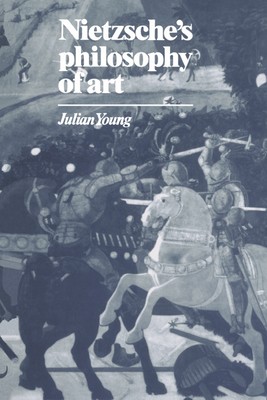
- We will send in 10–14 business days.
- Author: Julian Young
- Publisher: Cambridge University Press
- Year: 1994
- Pages: 188
- ISBN-10: 0521455758
- ISBN-13: 9780521455756
- Format: 15.2 x 22.7 x 1.2 cm, minkšti viršeliai
- Language: English
- SAVE -10% with code: EXTRA
Reviews
Description
This is the first comprehensive treatment of Nietzsche's philosophy of art to appear in English. Julian Young argues that Nietzsche's thought about art can only be understood in the context of his wider philosophy. In particular, he discusses the dramatic changes in Nietzschean aesthetics against the background of the celebrated themes of the death of God, eternal recurrence, and the idea of the Ubermensch. Young then divides Nietzsche's career, and his philosophy of art, into four distinct phases, but suggests that these phases describe a circle. An attempt at world-affirmation is made in the central phases, but Nietzsche is predominantly influenced at the beginning and end of his career by a Schopenhauerian pessimism. At the beginning and end art is important because it "redeems" us from life.
EXTRA 10 % discount with code: EXTRA
The promotion ends in 21d.02:59:15
The discount code is valid when purchasing from 10 €. Discounts do not stack.
- Author: Julian Young
- Publisher: Cambridge University Press
- Year: 1994
- Pages: 188
- ISBN-10: 0521455758
- ISBN-13: 9780521455756
- Format: 15.2 x 22.7 x 1.2 cm, minkšti viršeliai
- Language: English English
This is the first comprehensive treatment of Nietzsche's philosophy of art to appear in English. Julian Young argues that Nietzsche's thought about art can only be understood in the context of his wider philosophy. In particular, he discusses the dramatic changes in Nietzschean aesthetics against the background of the celebrated themes of the death of God, eternal recurrence, and the idea of the Ubermensch. Young then divides Nietzsche's career, and his philosophy of art, into four distinct phases, but suggests that these phases describe a circle. An attempt at world-affirmation is made in the central phases, but Nietzsche is predominantly influenced at the beginning and end of his career by a Schopenhauerian pessimism. At the beginning and end art is important because it "redeems" us from life.


Reviews